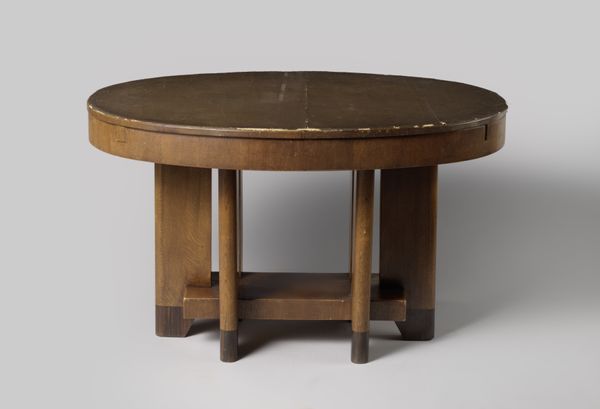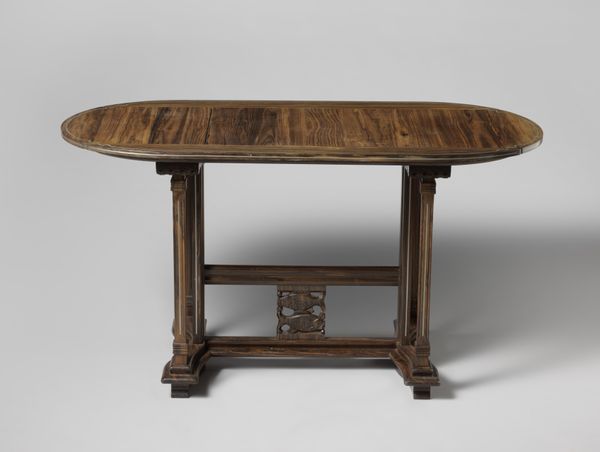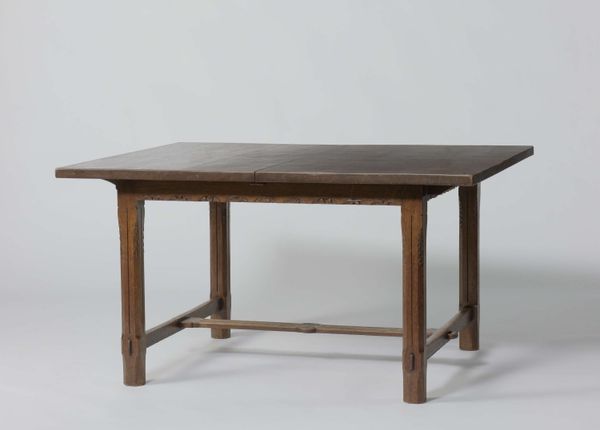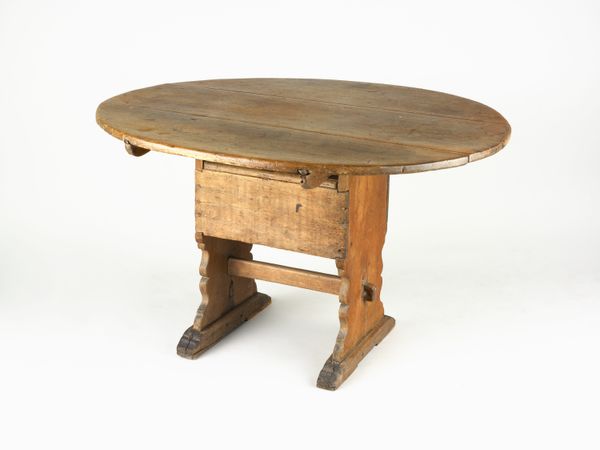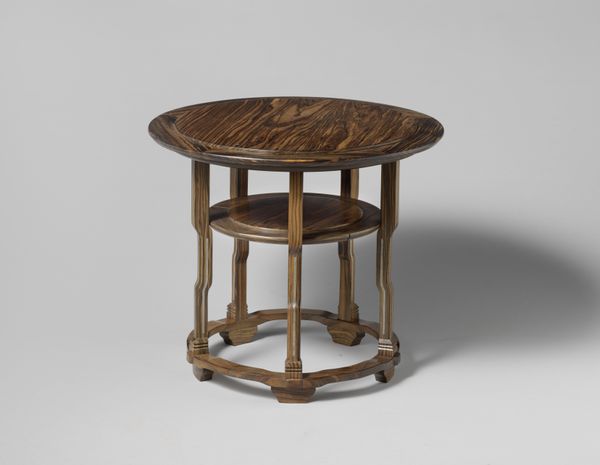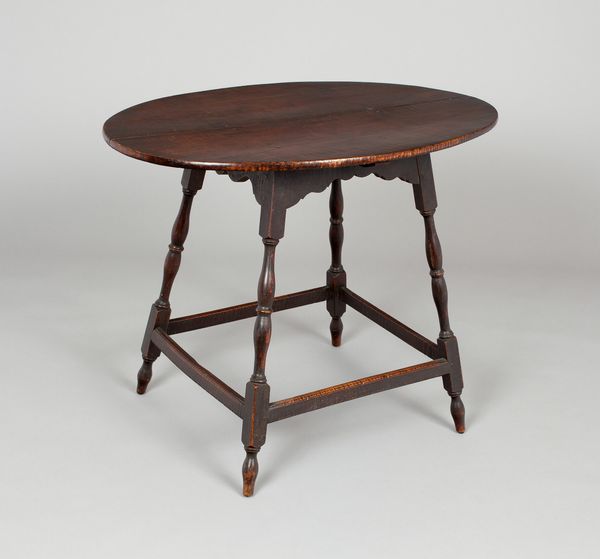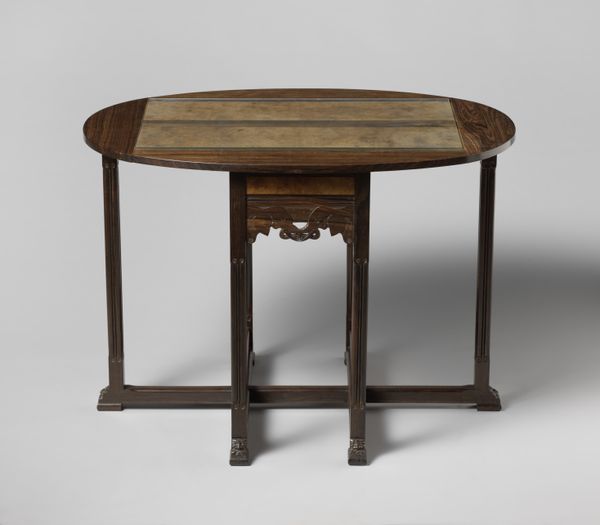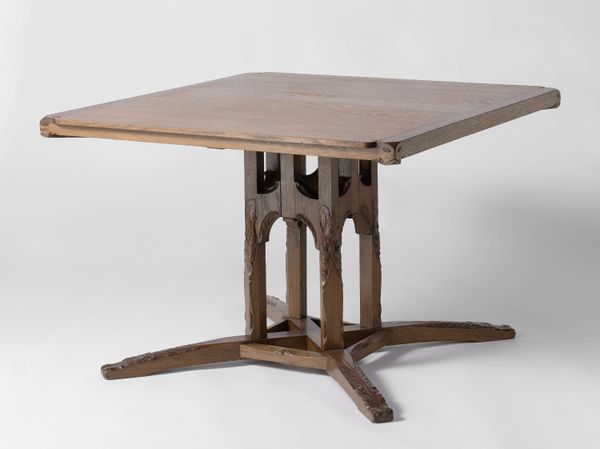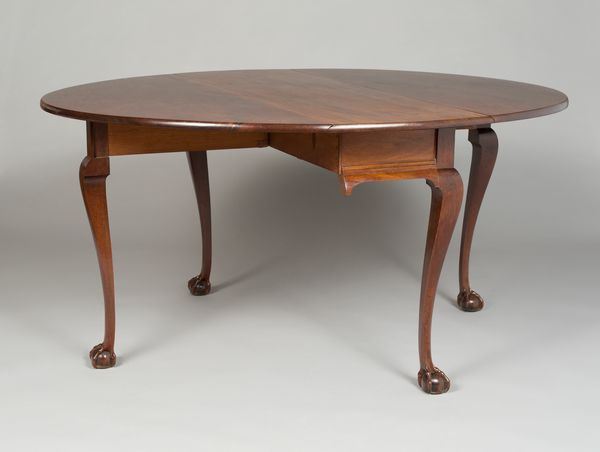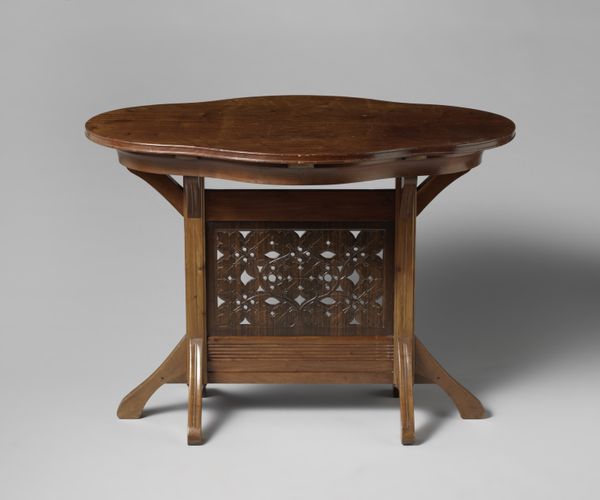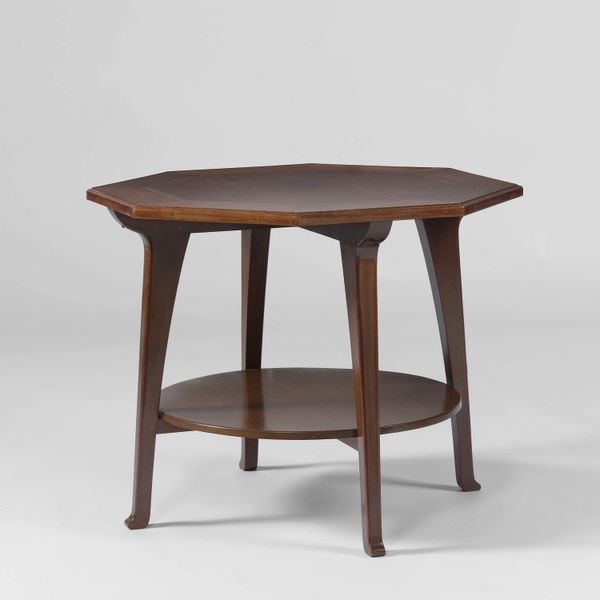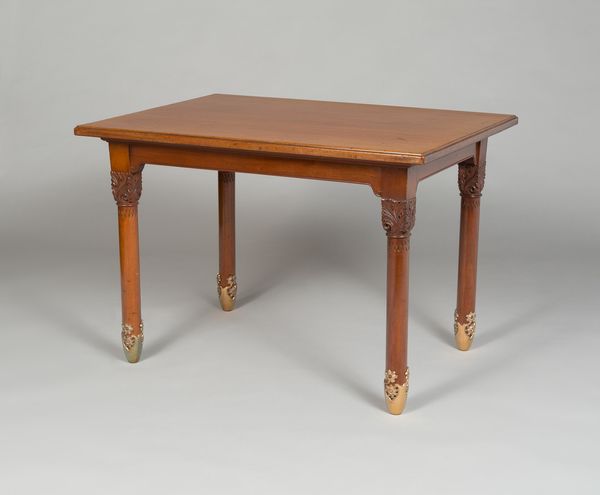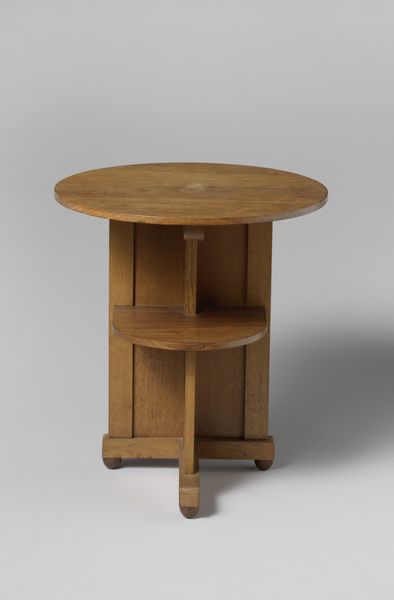
Tafel met ovaal tafelblad en twee bijbladen rustend op brede rechthoekige wangen 1933
0:00
0:00
wood
#
furniture
#
geometric
#
wood
#
modernism
Dimensions: height 75 cm, width 140 cm, width 220 cm, depth 110 cm, height 2 cm, width 41 cm, depth 110 cm, weight 65 kg
Copyright: Rijks Museum: Open Domain
Editor: Here we have Jacobus Fernandus Adolphus Semey's "Tafel met ovaal tafelblad en twee bijbladen rustend op brede rechthoekige wangen"— a wooden table from 1933, quite imposing and solid. I’m struck by the contrast between the oval tabletop and the very geometric base. How do you interpret that interplay of shapes? Curator: The tension you observe is key. Look at the cultural memory embedded in this furniture. Round tables often evoke a sense of equality, think of King Arthur's Round Table. But the supporting structure, that firm, rectangular geometry speaks to Modernism's embrace of industrial forms and a new social order. What happens when those egalitarian ideals, the circle, meet a structured, arguably rigid, foundation? Editor: That’s interesting. So, it's not just about aesthetics; it's also about the ideas that those shapes represent in culture? Curator: Precisely. Think of how people gather at tables. What does the shape invite? How does the weight of tradition –the "oval tafelblad" – interact with a very solid structure that has a grounded presence? And this weight can give way to more personal symbolisms. What memories, conscious or not, might an object like this hold? Who sat at it, what was decided here, and with what intentions? Editor: So, it’s like the table holds these layers of meaning. A kind of symbol representing more than just… a surface. Curator: Indeed. Even the material, wood, speaks of history and warmth, working against the harder edges of modernism. This tension—the circle, the wood, the modernist lines—invites endless interpretation. The furniture isn't just functional. it can be the setting for memory and potential narratives, for gathering and the exchange of views. Editor: Wow, I'll definitely look at furniture differently now. It is more than something for simple utilitarian tasks. Thank you. Curator: And I see that the exchange with new viewers invites new pathways into these lasting and solid symbols, and it inspires hope for conversations.
Comments
No comments
Be the first to comment and join the conversation on the ultimate creative platform.
